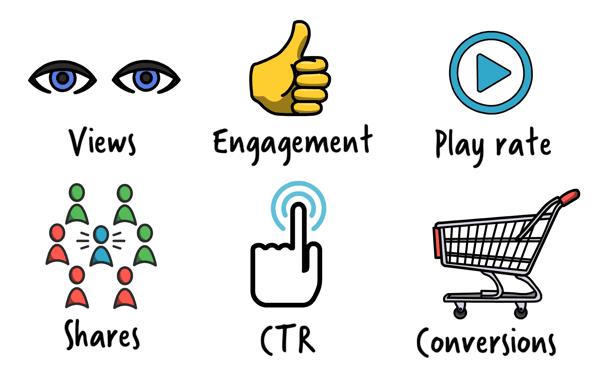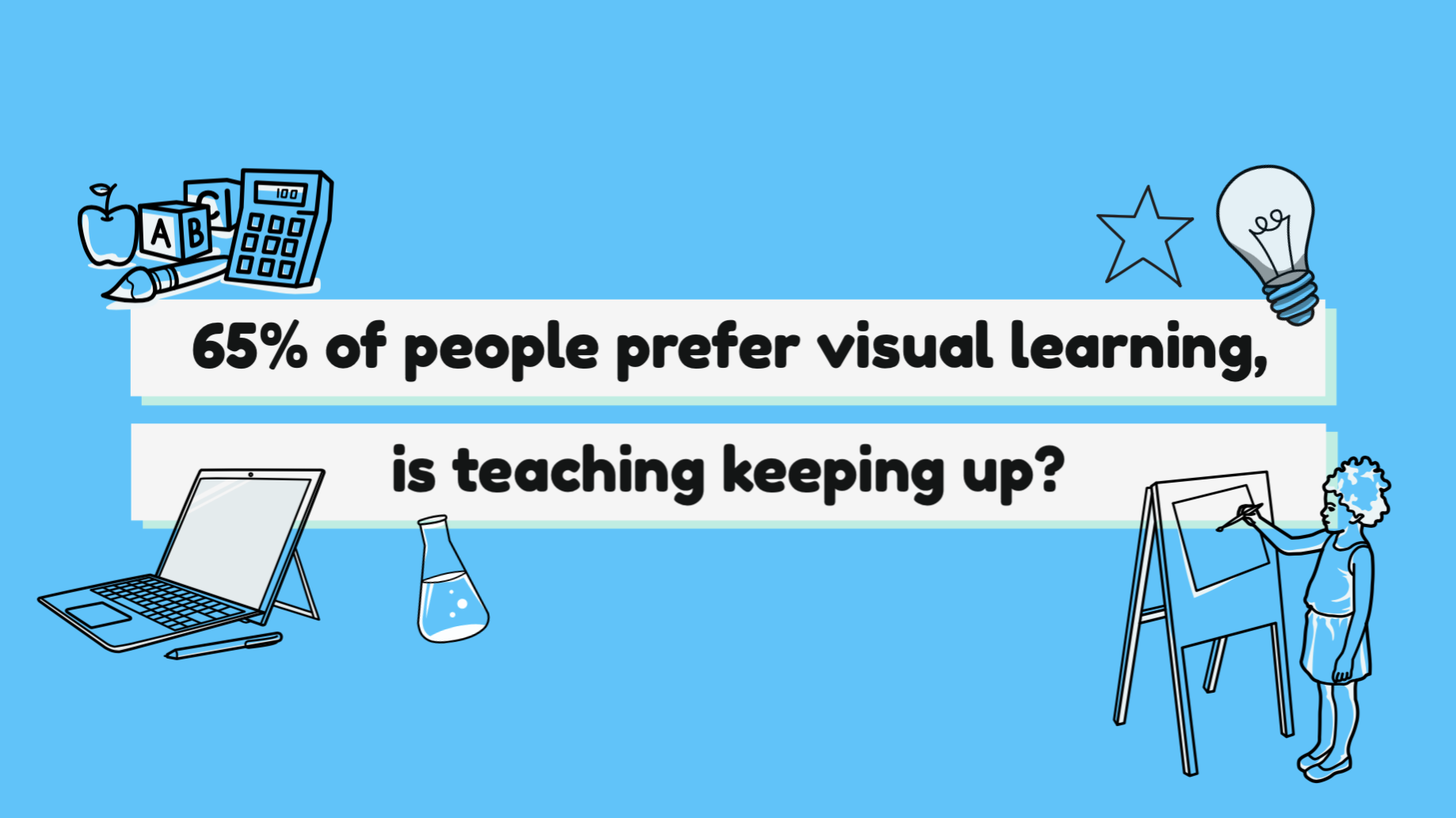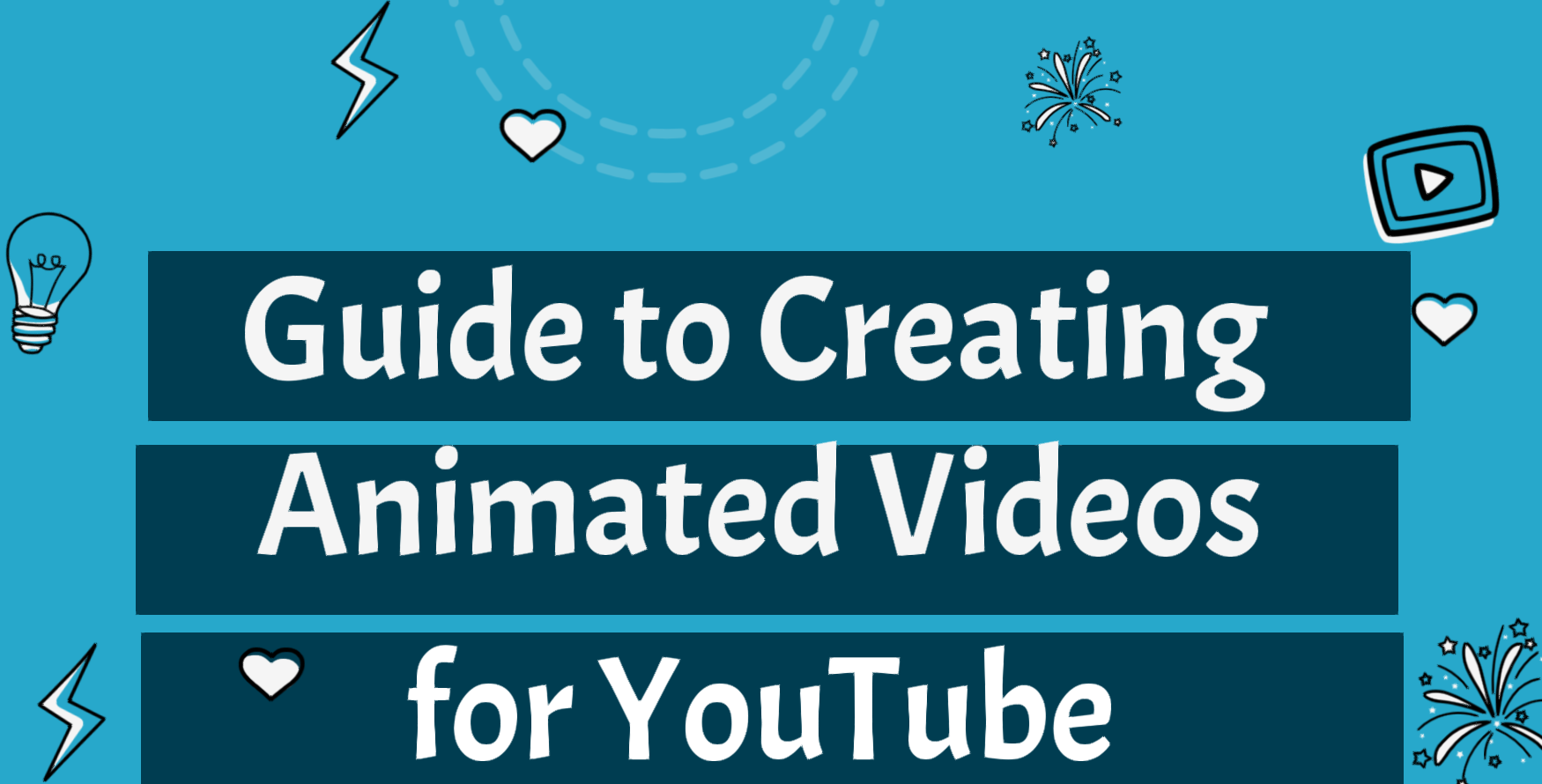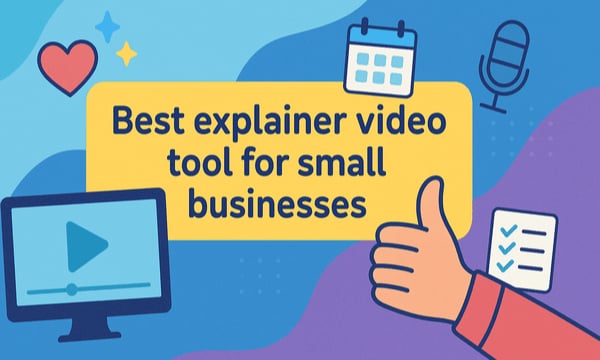Video plays an increasingly important role in how brands spread their message and promote themselves. However, unlike social media or content marketing, video marketing is often treated as an ad hoc activity without a defined strategy.
So, what does that mean for your videos? Without a strategy it's easy to lose sight of who you're making videos for and why. If you really want your video content to deliver tangible results, it's key to have a strategy in place.
Now you might be thinking, "that's all well and good but isn't building a strategy a long and tricky process?" and the answer is no! In our recent webinar we explained how to create your own video marketing strategy in just 6 simple steps.
You can catch up on the full recording of this webinar by clicking below 👇 or read on for a summary of the key takeaways.
Why you need a video marketing strategy
Now, creating a strategy for your video activity doesn't have to be a massive process that takes ages, but you will need to take some time to work through the steps, so why should you bother? 🤷♀️
There are four main benefits to having a strategy in place:
1. A strategy helps you focus on what's important - it acts as your guide to ensure you're consistently working towards your objectives and not just making content that you like.
2. A strategy ensures you deliver on time - without milestones and deadlines in place, it's easy for one video to take 6 months to create and your whole video campaign to be derailed.
3. A strategy helps you create better videos - just going through the process of thinking about who your audience is, what their pain points are and how you can share your message in the most compelling way will bring the quality of your videos up. It's during this time you'll be able to think clearly about your vision and put plans in place to deliver it in full.
4. A strategy helps you measure success - if you don't set goals at the start of a project, you have no way of knowing whether it's been a success or not. With that in mind, a strategy is crucial to help you understand the impact of your videos and prove that the investment paid off.
Hopefully you're now convinced that having a video marketing strategy is key to success, all that's left to do is create it. Here's how in six easy steps 👇
Step 1: Set your goals and budget
Before you do anything else, you need to outline why you want to create videos in the first place. What results do you hope adding video to your marketing activity will bring? Set at least one SMART (specific, measurable, achievable, realistic and time-bound) objective that will act as your north star for the rest of your strategy. As you work through the rest of the steps, pause to think about whether you're moving closer to or further away from your objective.
Alongside your objective/s, you also need to know what you've got to work with. Do you have a budget set aside for video marketing and what can this be spent on. Understanding this at the start will help to set expectations and ensure the rest of your strategy is realistic and achievable.


Step 2: Define your target audience
For people to take action after watching your video it has to resonate with them and to do that you have to know exactly who it is you're trying to reach. To fully define your target audience, ask yourself these three questions:
- Who is your buyer? You might already have a buyer persona but if not this is a great opportunity to create one. Essentially you're outlining who your products/services are designed for. This should include key demographics and their concerns/desires.
- Where are they in the marketing funnel? You're not going to treat someone who has just landed on your website for the first time the same as someone who's already downloaded some of your content. So consider how much your target audience will already know about your brand and what information will help them move further down the funnel.
- Where do they hang out? It might sound obvious but think about where your audience spends time online and align your videos to those channels. Otherwise all your hard work will be for nothing if your target audience never see your video!



Step 3: Choose your channels
With your budget and audience set, it's easy to choose the right channels for your videos. Just make sure you think about how your video is structured and set up for each channel. For instance, longer content might suit YouTube really well, but viewers are unlikely to watch a 10 minute video on your website.
So whether you're going to be sharing your video on social media, in emails, on your website or as a presentation, just be sure to optimize it for that location. You can learn our tips for optimizing your videos for the different social media platforms here. Plus, don't be afraid to repurpose content! One video can be edited for multiple channels so that you get maximum value from the time and effort invested. You can watch our full webinar on how to repurpose content here.

Step 4: Create your video marketing schedule
Now it's time to put some dates and deadlines against your strategy. As we said earlier this is really going to help you stay on track and achieve everything you want to in the time frame. So we recommend splitting this out into the three stages: strategy, production and distribution. These can be spread across 3 days or 3 months depending on how much time you have.
But the key thing here is to outline exactly what you need to do to bring your video to life and when. This could be in a simple spreadsheet, list or plotted on a calendar.
-1.gif?width=703&name=ezgif.com-video-to-gif%20(79)-1.gif)
Step 5: Creating your videos
So you know what you want to achieve and have a plan of action, now you need to decide whether you're going to create your videos yourself in-house or work with an outside agency like Sparkol Studio.
There are pros and cons to each and so it really depends on your budget, how much time you have to create videos and the level of professionalism you want to achieve. You can create videos using VideoScribe that fulfil your objectives and look brilliant but if you're short on time, have the budget and want that extra special sparkle, working with an animation studio can be a great option.
Just make sure you can give them a full brief outlining what you're looking for. The more detail you can give to outside video creators the better. At Sparkol we ask our customers to fill in this creative brief to make sure we fully understand what you're looking for and how we can meet and exceed your expectations ✨

Step 6: Measure success and learn from the results
Lastly, to ensure you can report back to your manager and colleagues on the success of your video marketing, you need to choose some metrics. The metrics you choose should link to your objectives. For instance, if your objective is to drive 100 downloads of your product information then click-through rate (CTR) is going to be important to measure.

These are just a selection of the video marketing metrics you could choose from:
Views = this is simply the amount of times your video has been watched. This could be on your website or social media accounts. It's a starting point to understanding how engaging your video is.
Engagement = this includes likes and comments on social media or on your blogs or other webpages that allow for interaction. The fact that someone has taken the time to show or tell you how they feel about your video is a great indication that they've resonated with it in some way.
Play rate = this is the number of people who have seen your video that decide to click play. This is a good indicator of how appealing and relevant your video is. If your play rate is low you should consider changing the title or thumbnail to see what impact it has.
Shares = this means people sharing your video with their own audiences on social media. This shows that your audience not only found the video useful but they want their friends and family to benefit from the knowledge too. This is a great result if your objective is to increase brand awareness.
Click-through rate (CTR) = this is how many people clicked on the link with your video. The link could be to learn more, make a purchase or get in contact with customer service.
Conversions = for most of us, the ultimate sign of success is in conversions. This means someone has watched your video and it was so relevant and persuasive that they either gave you their contact information or bought your product.
To get started on your own video marketing activities, log in to VideoScribe or start a free 7-day trial today (no credit card details needed)!




.png)


![How to create animation magic [3-part guide to video success]](https://blog.videoscribe.co/hubfs/How%20to%20create%20animation%20magic%20guide%20VideoScribe.png)


%20(1).png)


COMMENTS